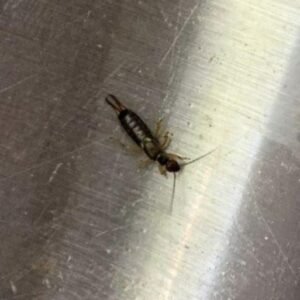Few products have achieved the legendary status of SPAM in the realm of canned meats. This square-shaped amalgamation of pork, water, salt, potato starch, sugar, and sodium nitrate has been the subject of fascination, ridicule, and even adoration for 77 years.1 What makes SPAM truly intriguing is its mysterious name, a subject of debate and speculation over the years. In this listicle, we’ll delve into the surprising history and origin of the name, its cultural impact, and its resurgence in modern cuisine.
The Birth of SPAM
SPAM’s journey began in Austin, Minnesota, where George A. Hormel founded a meatpacking facility in 1891. However, it wasn’t until 1937 that the canned meat, as we know it, was born. The creation of this iconic canned meat involved experimentation with ingredients, can sizes, and preservation techniques. Notably, Julius Zillgitt, a Hormel employee, played a role in perfecting the canning process to prevent the meat from sweating inside the can. The recipe, which primarily consisted of pork shoulder, water, salt, sugar, and sodium nitrate, remained largely unchanged for decades.
The name itself has sparked curiosity and myths throughout its history. Some speculate that it stands for “Scientifically Processed Animal Matter,” while others believe it’s an acronym for “Shoulder of Pork And Ham.” However, the official explanation from Hormel is that it’s short for “spiced ham”. The name was suggested by Kenneth Daigneau, who received a $100 prize in a contest sponsored by Hormel. Regardless of its origins, the name has endured and become synonymous with the product.
SPAM During World War II
SPAM’s popularity soared during World War II, especially among American and Allied soldiers. The U.S. military purchased millions of pounds of it to feed troops overseas, leading to both admiration and disdain for the product. While some soldiers grew tired of its ubiquity, others considered it a lifesaver. SPAM’s role as a staple during wartime extended beyond American shores, with countries like Russia and England relying on it to combat food shortages.2
After the war, its role shifted from a central dish to a versatile ingredient. In the 1960s, it found its way into recipes like “upside-down pie” and “SPAM sandwiches topped with baked beans“. However, its most significant culinary impact was felt in Hawaii and the Asian Pacific. Hawaii, in particular, embraced it as a result of government restrictions on local fishing industries. Japanese immigrants in Hawaii are credited with inventing dishes like SPAM musubi, a popular local snack that combines it , rice, and nori seaweed.
SPAM in Modern The Modern World
In recent years, SPAM has made a surprising comeback in modern cuisine, finding its way onto upscale restaurant menus. Chefs have experimented with SPAM-infused dishes, including musubi, foie gras loco moco, and pizzas. The “punk attitude” of incorporating this processed meat into fine dining reflects its enduring appeal and versatility.
Beyond its culinary fame, SPAM has left its mark in the digital realm as well. The term found its way into the world of email, referring to repetitive and unsolicited messages. It was inspired by a famous Monty Python sketch where the word “SPAM” is repeated incessantly. The connection between the two was made by early players of “multi-user dungeons” and online games.
Conclusion
SPAM’s journey from its humble beginnings in Austin, Minnesota, to its global fame is nothing short of remarkable. Its enigmatic name, wartime significance, and unexpected resurgence in modern cuisine continue to captivate people worldwide. Whether you savor it in a classic musubi or encounter it as an email in your inbox, SPAM remains a cultural icon that defies easy categorization.





